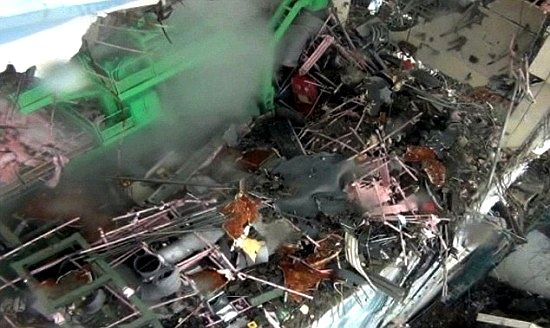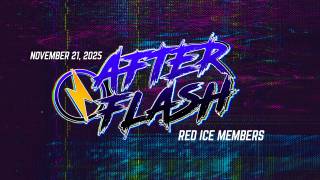TEPCO: Meltdown at Reactor 1 Hour After Earthquake ... Reactors 2 and 3 Have Likely Melted Down As Well
Source: asahi.com

Data shows meltdowns occurred at the No. 2 and No. 3 reactors of the Fukushima No. 1 nuclear power plant, creating huge problems for the plant operator that had presented a more optimistic scenario.
And like the No. 1 reactor, the melted fuel appears to have created holes in the pressure vessel of the No. 3 reactor, according to the data of Tokyo Electric Power Co. Released May 16.
Goshi Hosono, special adviser to Prime Minister Naoto Kan, acknowledged the likelihood of meltdowns at the No. 2 and No. 3 reactors.
"We have to assume that meltdowns have taken place," Hosono said at a news conference May 16.
Haruki Madarame, chairman of the Nuclear Safety Commission, said in a separate news conference the same day that the meltdowns should not come as a surprise.
"When highly contaminated water was found at the No. 2 reactor building in late March, we recognized that a meltdown had taken place. So I informed the government," he said. "As for No. 1 and No. 3 reactors, we recognized that, given the processes that led to the accidents there, the same thing had occurred. "
Immediately after the crisis erupted at the nuclear power plant in March, experts pointed out that meltdowns likely occurred at all three reactors.
But TEPCO’s measures to contain the crisis have been based on the assumption of lighter damage to the reactor cores.
TEPCO had said it believed that only a portion of the nuclear fuel rods had melted. Now, it appears that all parts of the fuel rods have melted.
TEPCO recently said a meltdown likely occurred at the No. 1 reactor. But a TEPCO official on May 16 declined to comment on the possibility of meltdowns at the No. 2 and No. 3 reactors.
"We have yet to be able to grasp the entire situation at the plant," the official said.
A meltdown is a situation in which nuclear fuel melts and accumulates at the bottom of the reactor pressure vessel, which is located inside a containment vessel.
At the No. 3 reactor, the melted fuel may have burned through the pressure vessel to the containment vessel, the data showed.
TEPCO on April 17 released a schedule to reach a cold shutdown at the Fukushima plant within six to nine months.
However, given the latest data, the embattled company will have to drastically modify its plans.
If meltdowns have indeed occurred, more time will be needed to construct a system that cools the reactors. In addition, the company will be tasked with the huge chore of disposing of massive amounts of highly contaminated water.
TEPCO’s latest data describes the situation immediately after the Great East Japan Earthquake and tsunami devastated the coast of the Tohoku region on March 11.
Release of the data, which had been kept at the central control room at the nuclear power plant, was delayed because it took time to restore power and remove radioactive materials attached to the papers.
According to the data, the pressure in the pressure vessel of the No. 2 reactor dropped at 6:43 pm on March 15. A similar drop in pressure also took place at the No. 3 reactor at 11:50 pm on March 16.
Those declines were apparently the result of holes made in the pressure vessels.
Previously, it was believed that water was leaking through holes at the bottom of the pressure vessels where measuring instruments and part of the control rod mechanisms were located.
Now, it appears that melted nuclear fuel formed new holes in the pressure vessels.
Radioactive materials, such as technetium, produced when nuclear fuel rods are damaged, have been detected in water in the No. 3 reactor building. That discovery has raised speculation that the melted nuclear fuel has breached the pressure vessel and landed in the containment vessel.
During the meltdown at Three Mile Island in the United States in 1979, the fuel remained in the pressure vessel. But work to remove the melted fuel from the pressure vessel, which started in 1985, took five years to complete. An additional three years were needed to confirm that radioactive contamination had been removed from the reactor.
Given the more serious situation at the Fukushima plant, some nuclear experts say more than 10 years will be needed to remove the melted fuel, eliminate the contamination and dismantle the reactors.
Fumiya Tanabe, a former senior researcher at what was then the government-affiliated Japan Atomic Energy Research Institute, said black smoke from the No. 3 reactor building in the days after the earthquake and available data on pressure showed early on that a meltdown had taken place.
Read the full article at: asahi.com
Fukushima Effect: Japan nuclear zone expands
Video from: YouTube.com
Video from: YouTube.com
Also tune into:
obin Falkov - Herbs, Health and Food Freedom & Radiation Defense
Richard Sauder - Ayahuasca Visions & The AI Machine’s Nuclear War on Humanity
Richard Sauder - Fuk-u-shima, Nuclear Catastrophe & Collective Karma
Richard C. Hoagland - The Secret Space Program & The Fukushima Nuclear Reactor Disaster






















